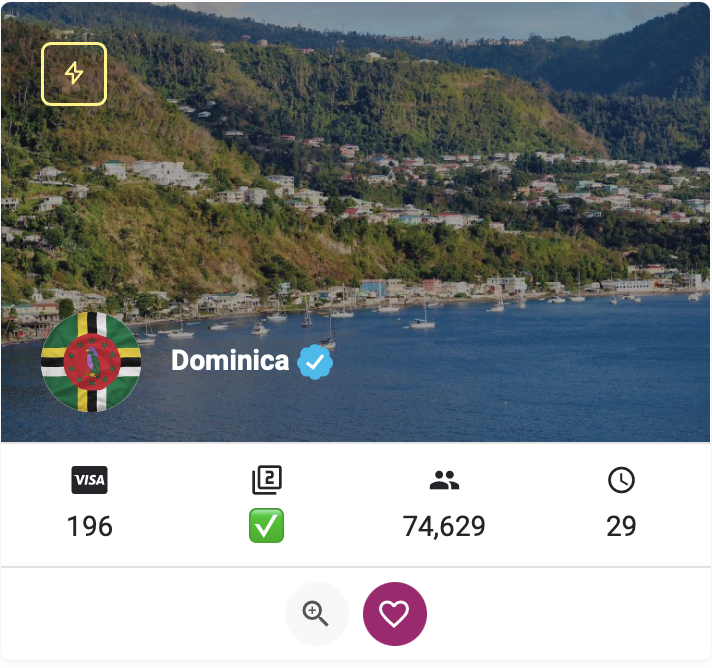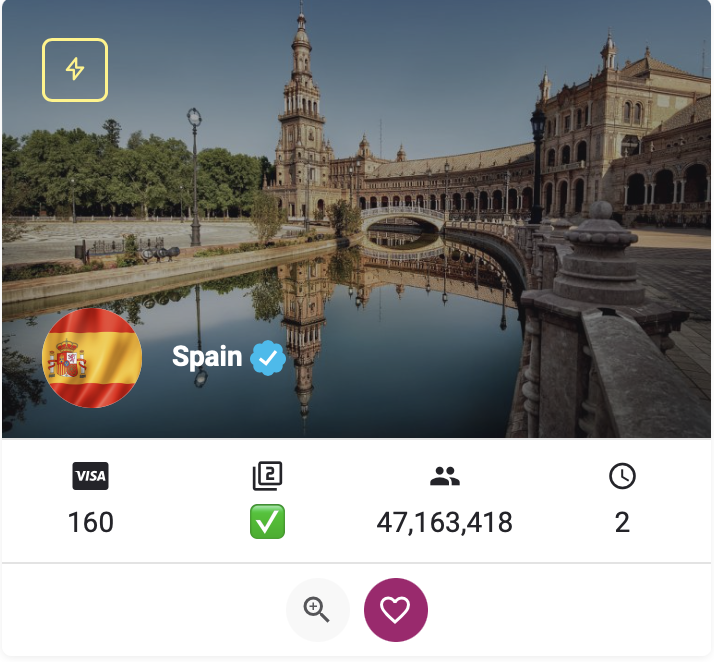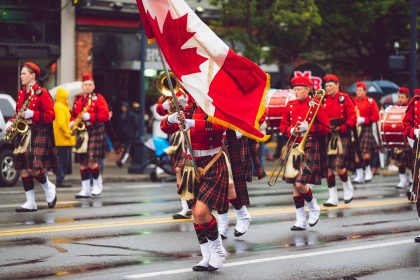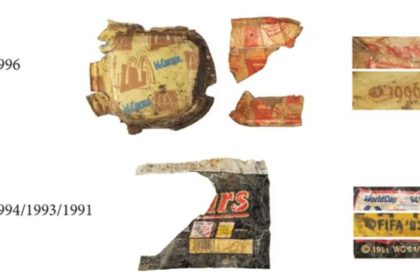Las Flale is a happy and unbelievable festival held in Valencia, Spain, and is less popular than the Cow Festival or Latomatina. This festival is a complete party and all that includes street parade, local cuisine booths and fireworks. The Spanish Las Fayas Festival impresses the city of Valencia for seven consecutive days and ultimately leaves unforgettable memories for participants. We will tell you why this festival has become so popular among the Spaniards.
History of the Spanish Las Fayas Festival
In the Middle Ages, the carpenter and workers were gathering and eventually burning, and this was gradually turned into a tradition and guilds on the day of St. Joseph, March 5. At one time, the person (probably drunk at the time) decided to cover the wooden boards before burning the clothes. In the 1980s, these adorned boards became the subject of humor and burned at night. This has quickly evolved over a few hundred years of competition between neighborhoods. Nowadays, the Burning of Wooden Dolls as the Spanish Las Fayyas Festival is held over the course of 7 days. You can also coordinate the Spanish Tour History Festival with the time of Las Fayas.
In year 3, UNESCO announced the Las Flale Valencia Festival as “intangible cultural heritage of humanity”.
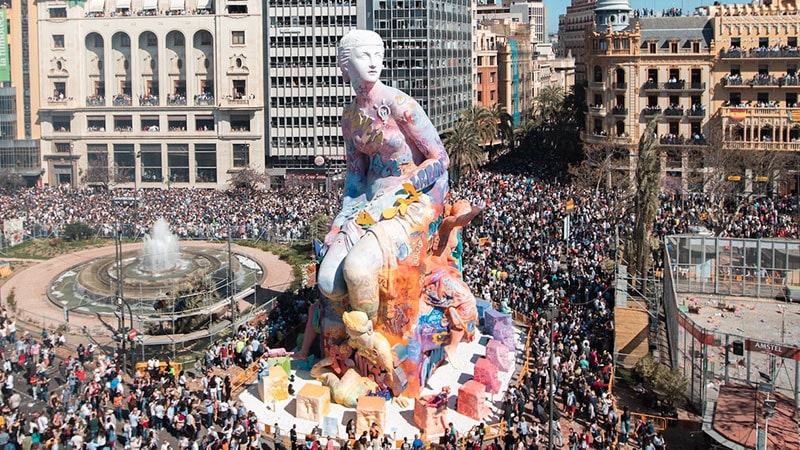
There are hundreds of neighborhood associations throughout Valencia, each financing themselves. They will then compete to attract Falleros artists who will be responsible for art design. Many of these Falro artists have their own distinct style, and it is easy to distinguish an artist based on the aesthetic style of previous years. Today, wooden dolls are pre -designed and a few months left to hold the Las Fayas Festival.
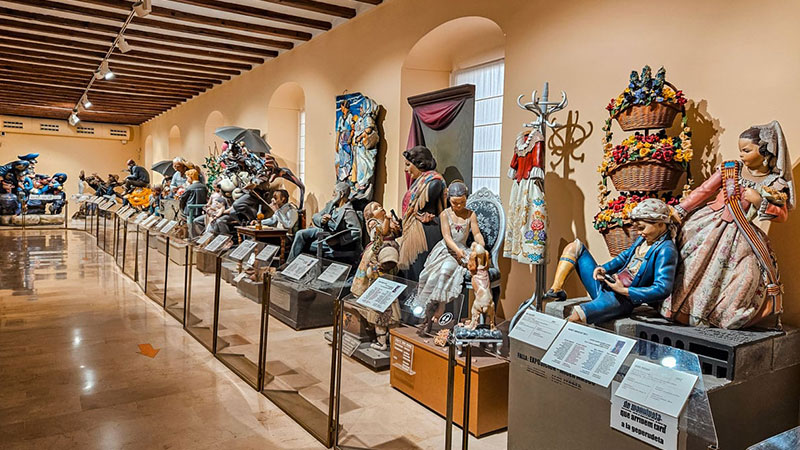
Las Fayes
The wooden dolls of the Spanish Las Fayas Festival are called Fala. The construction of each phala begins as a wooden scaffold structure. Each piece and ninotes are usually made as a plaster mold and then filled with flammable materials. Traditionally, the molds were paste with wood, cardboard and paper. Today newer materials such as stigraphom, resin and fiberglass are used. These materials make the dolls lighter and so they can be designed in larger dimensions. But there are environmental concerns about burning as well as complaints about the black smoke produced by these materials, which is almost a rational protest. The point is that at the Las Fayas Festival you have only a few minutes to see the dolls’ fire and then the only wooden dock will remain.

Read more: Introducing Spanish Festivals
Look at the Las Fayas Festival
Some of the basic terms you will find at the Las Fayas Festival:
- Fala: the entire monument and dolls
- Remit: Central shape. Smaller phalas are likely to have one masculine, but larger falsia may have multiple rituals.
- Ninot: One of the smaller figures scattered around the base of Fala. Often it is humorous.
- Ninot Indultat: Ninotti who won the popular vote at the pre -Ninot Festival in the City of Art and Science. At the end of Las Flale, Ninot Indultat takes a permanent home at Museo Faller instead of burning live. This name is translated into “Ninot forgiveness”.
- Falla Infantile: A smaller fabric designed with the main fashion for children and humorous topics.
- Falro/Fallra: Men and women who wear traditional Valencia.
- Artista Fallero: Artists who design Falah.
- La Crema: The final night of the festival, where all the fins are buried throughout the city.
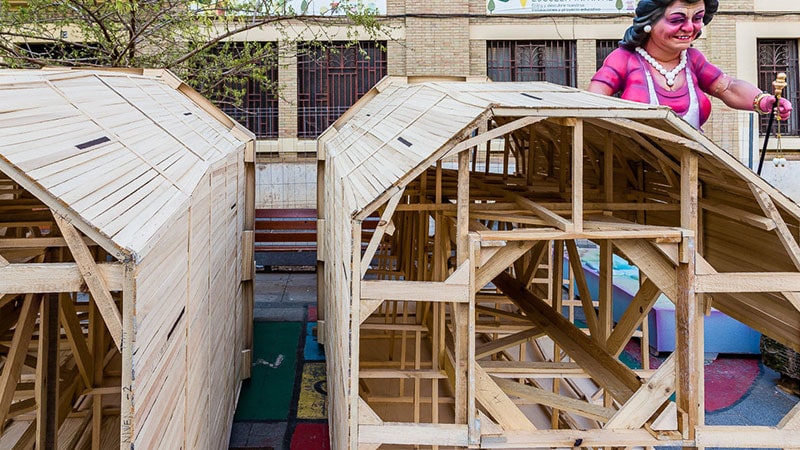
The size of the phala varies from a few meters to several floors. The Falas Commission is essentially divided into weight categories where the cost is the decisive factor. Special (special sections) are the largest and most expensive phala. In year 2, there were 2 Falahs in this category at a price range of 1 to 2 euros. These dolls are divided into several parts. Sections 1 and 2 have two rows (A&B), while the 2-4 section has three floors (A, B, and C). The 4C section is the lowest level with a price range of 1 to 2 euros. In year 2, there were officially four Fallas across the city.
There is also always a pharmacist in Plaza del Ayuntamieno, which is generally similar to Fallas Especiales, but is funded by the city instead of a private company. This doll is always the last for burning horoscope, which is burned one clock later than other phala (instead of midnight at 1am).
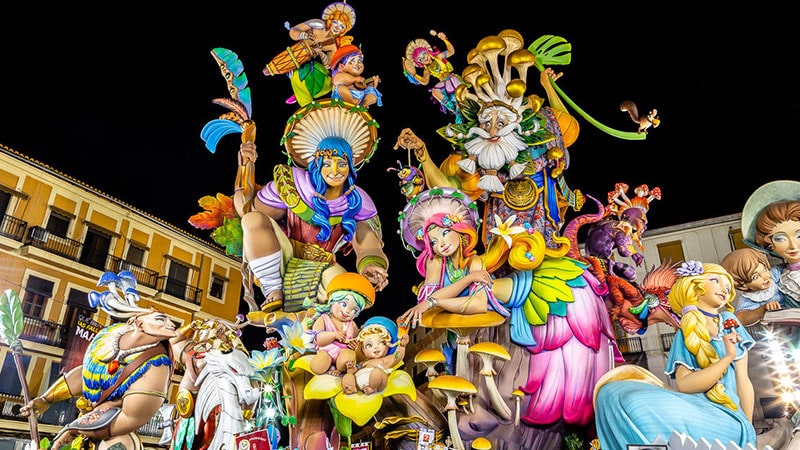
Read more: Spanish Las Festival Festival
Rituals and performances of the Las Fayas Festival
During the Spanish Las Fayas Festival, Valencia will be a set of magnificent and passionate rituals, ceremonies and plays. Interestingly, each of the event is an integral part of the cultural identity of the event, with a long history. Here’s a look at these rituals:
Installing Falas sculptures (LA Plantà)
The festival officially begins with a ceremony called La Planta on March 5; On this day, they are installing huge and artistic sculptures that have been made by local artists for months in different parts of the city. These statues, known as Falas, often portray social, cultural, and political themes in a humorous way.
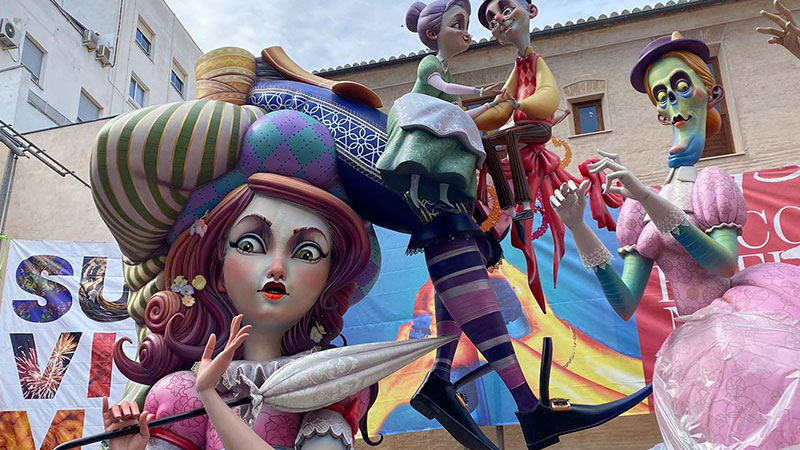
Daily firefighting ceremony at the Spanish La Fayas Festival (La mascletà)
The “Mesklleta” ceremony at the Spanish La Fayas Festival from the beginning of March to the end of the festival will be held every day at 9:50 pm in the main square of the city. This special audio-audio show, which focuses more on sound and rhythm, is one of the most important and popular programs of the festival.
Traditional parade and flower donation ritual (La ofrenda)
On March 1 and 2, thousands of people in the traditional Valencia district were present in a magnificent parade and paid tribute to him by donating flowers to a large statue of Prophet Mary. The event is known as “Ofranda” and exhibits the spiritual effects of the festival.
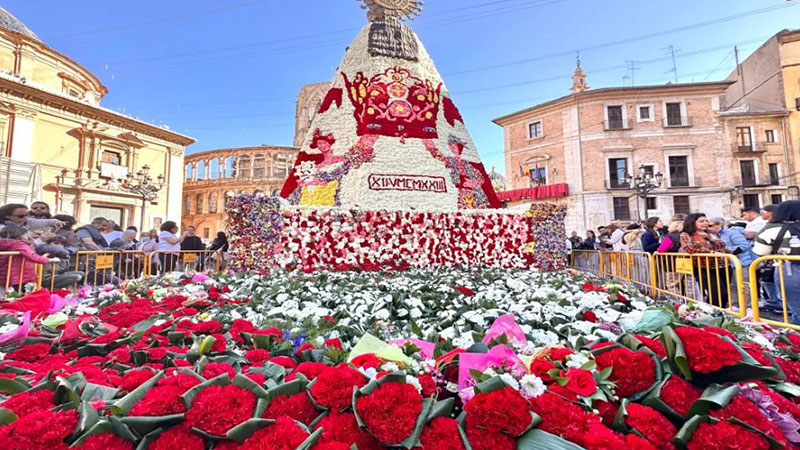
The night of fire (La nit del foc)
On March 5, we will see the most magnificent fireworks of the festival, “The Night of Fire”. This stunning show brings thousands together in the streets of the city and features exciting scenes.
Burning the Falas (LA Cremà)
Here is the story of the Spanish La Fayas Festival. On the night of March 5, the festival ends with a ceremony called La Karma. On this night, all the statues of Falas (except for one selected work transferred to the museum) are burned during a ceremony. The people of Valencia see this ritual as a symbol of winter, the destruction of the filth and the rest of life.

Date of the Spanish La Fayas Festival
The Las Fayas Festival is officially held in Valencia every year in March from March 1 to March, but for years, celebration activities and preparations (such as designing and manufacturing dolls) have begun months ago. This timeframe is at the same time as the Day of Saint Joseph, a supporter of the unclean, and the religious and cultural roots of the festival go back to these events.
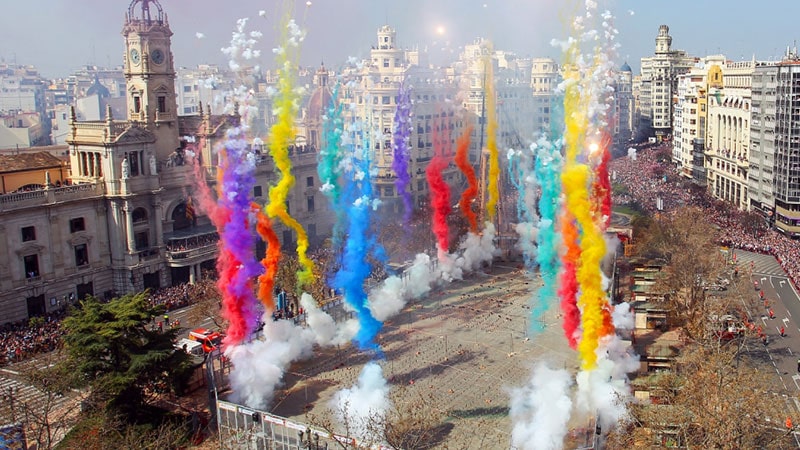
Final speech
The Spanish Las Fayas Festival is not only one of the largest and most passionate popular celebrations in the country, but it can also be considered a mirror of artistic creativity, cultural traditions and social spirit of the Valencia people. In this festival of art, fire, music and long -standing rituals, combines a unique experience for each visitor. It is not without reason that Las Fayas is considered one of the prominent symbols of local identity and tourist attractions in the area.
Copying the contents of the Vanak Star Airlines agency is solely with the source.
RCO NEWS








